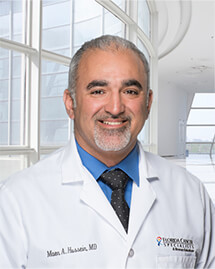Extended Reduced-Dose Apixaban for Cancer-Associated Venous Thromboembolism
BACKGROUND
In patients with active cancer and venous thromboembolism, whether extended treatment with a reduced dose of an oral anticoagulant is effective in preventing recurrent thromboembolic events and decreasing bleeding is unclear.
METHODS
We conducted a randomized, double-blind, noninferiority trial with blinded central outcome adjudication. Consecutive patients with active cancer and proximal deep-vein thrombosis or pulmonary embolism who had completed at least 6 months of anticoagulant therapy were randomly assigned in a 1:1 ratio to receive oral apixaban at a reduced (2.5 mg) or full (5.0 mg) dose twice daily for 12 months. The primary outcome was centrally adjudicated fatal or nonfatal recurrent venous thromboembolism, assessed in a noninferiority analysis (margin of 2.00 for the upper boundary of the 95% confidence interval of the subhazard ratio). The key secondary outcome was clinically relevant bleeding, assessed in a superiority analysis.
RESULTS
A total of 1766 patients underwent randomization at a median time since the index event of 8.0 months (interquartile range, 6.5 to 12.6); 866 patients were assigned to the reduced-dose group, and 900 to the full-dose group. The median treatment duration was 11.8 months (interquartile range, 8.3 to 12.1). Recurrent venous thromboembolism occurred in 18 patients (cumulative incidence, 2.1%) in the reduced-dose group and in 24 (cumulative incidence, 2.8%) in the full-dose group (adjusted subhazard ratio, 0.76; 95% confidence interval [CI], 0.41 to 1.41; P=0.001 for noninferiority). Clinically relevant bleeding occurred in 102 patients (cumulative incidence, 12.1%) in the reduced-dose group and in 136 (cumulative incidence, 15.6%) in the full-dose group (adjusted subhazard ratio, 0.75; 95% CI, 0.58 to 0.97; P=0.03). Mortality was 17.7% in the reduced-dose group and 19.6% in the full-dose group (adjusted hazard ratio, 0.96; 95% CI, 0.86 to 1.06).
CONCLUSIONS
Extended anticoagulation with reduced-dose apixaban was noninferior to full-dose apixaban for the prevention of recurrent venous thromboembolism in patients with active cancer. The reduced dose led to a lower incidence of clinically relevant bleeding complications than the full dose. (Funded by the Bristol-Myers Squibb–Pfizer Alliance; API-CAT ClinicalTrials.gov number, NCT03692065.)
